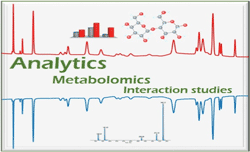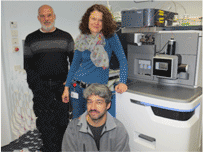Analytics


Sample Information - Proteins
The customers are strongly advised to get in touch with the Analytics group prior to planning their experiments, harvesting and storing their samples. Statistical issues, necessary controls, amount of plant material per sample, fresh or freeze-dried storage conditions and background contamination due to unsuitable plastic ware are points, which have to be considered in advance.
One of the common reasons for the failure of protein MS experiments is the presence of contaminants introduced during the course of the sample preparation. Common contaminants, keratins and polymers, when present in large amounts, can overwhelm mass spectrometer and liquid chromatography columns. Polymers (e.g. PEG and detergents) are especially notorious as they “stick” to reversed phase columns leaching out slowly and contaminating subsequent samples in the run. Moreover, most polymers ionize better then peptides, resulting in a “strong signal” and may suppress the ionization of peptides and proteins. Other common contaminants observed in samples are BSA, immunoglobulins and other serum proteins, originating from western blot blocking and cell culture media.
DO’s & DON’T’s
Use powder free gloves only.
Designated plates and lab ware should be used only for protein-MS-analytic to avoid contamination of unwanted proteins. Clean the glassware, especially the gel plates with 0.5 M NaOH, rinse with water (milliQ or nanopure) and with 70% Ethanol. Gel boxes and storage containers should be equally cleaned with water (milliQ or nanopure) and rinsed with 70% Ethanol. Use only polypropylene microfuge tubes. Do not use colored tubes. Use high quality reagents and solvent. Always use freshly prepared reagents. Do not use parafilm to cover beakers or other containers. Keep it away from proteins samples. In case of PAGE-Electrophoresis with self‐cast gels, wait 24 hours before using to ensure that polymerization is complete to avoid alkylations of cysteines by acrylamide monomers. Always store gels in closed containers even during destaining. Reserve storage containers for this sole purpose. Keep in mind that most polymer contamination derives from soap, hand creams and detergents commonly used in laboratories. In case of gel-electrophoresis try to load as much as you can and, if possible, run your samples in duplicate. One can serve as a backup.
Heat the samples as minimally as possible, if required; do not incubate more than a few minutes at high temperature. Do not incubate protein samples with UREA at temperatures greater than 50° C.
Before cutting the bands destain the gel completely to remove the background and scan the gel. Make sure that the glass surface of the scanner is thoroughly cleaned with 70% ethanol. Do not use Food Wrap or overhead transparencies; instead seal the gel in a plastic bag with minimum water for scanning.
Use the following precautions and steps while cutting bands from a gel:
Clean a glass plate or glass surface of a light box as described above. Place the gel on the surface. Do not allow a gel to dry out, if required add some milliQ water on it (the gel should not float in water). Cut the gel band of your choice with a clean scalpel or new razor blade. It is good practice to clean the scalpel and razor blade with 70% ethanol before using. If an entire gel lane is to be cut then start cutting from high molecular weight to low molecular weight. If a sample is run in duplicate (PREFERRED) then cut both the lanes and band at the same time to maintain consistency. Please inform us if you do not have a backup sample.
altered according to proteomics.facilities.northwestern.edu/items-2/
